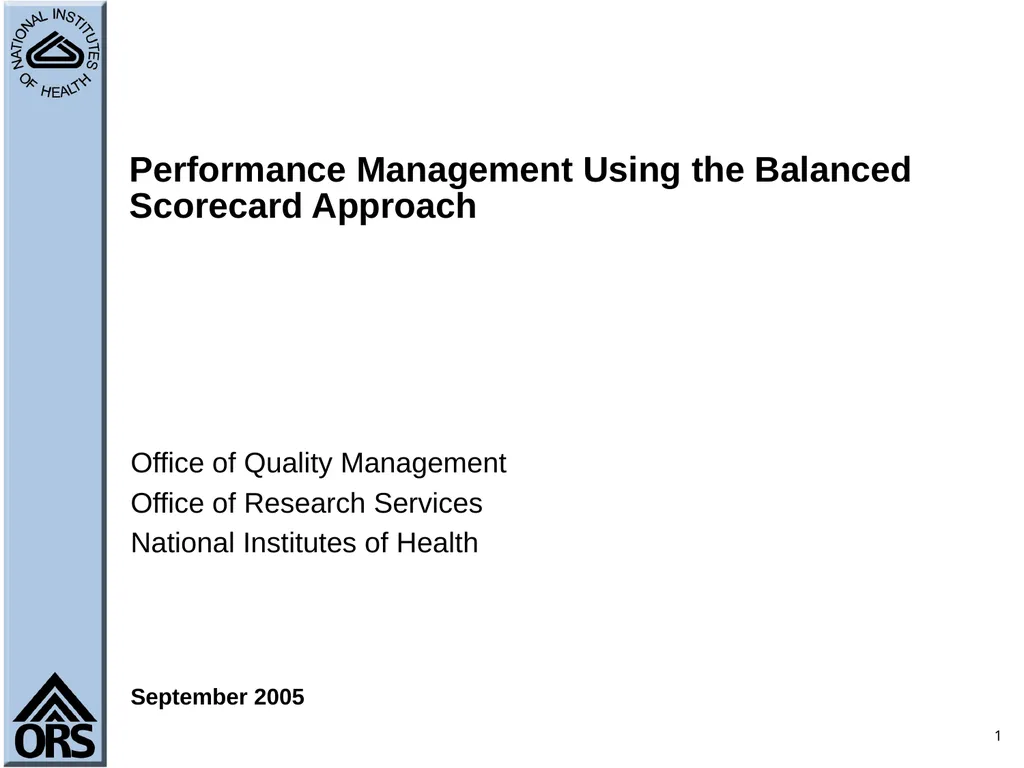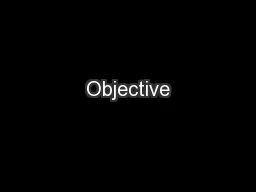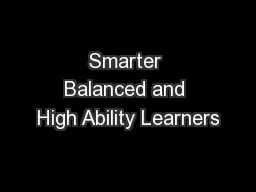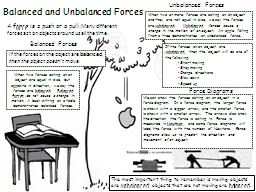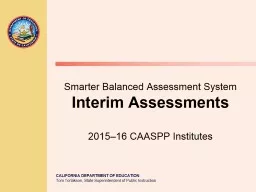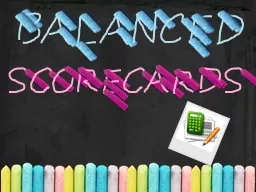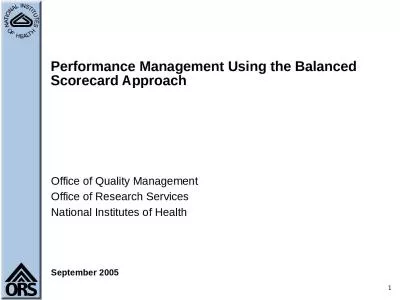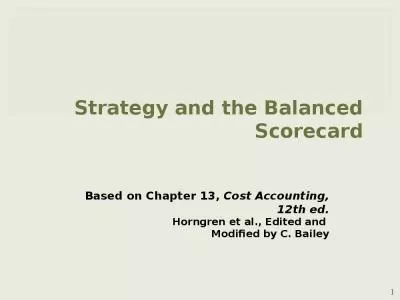1 Performance Management Using the Balanced
Author : sherrill-nordquist | Published Date : 2025-06-23
Description: 1 Performance Management Using the Balanced Scorecard Approach Office of Quality Management Office of Research Services National Institutes of Health September 2005 Additional information For more information on Performance Management in
Presentation Embed Code
Download Presentation
Download
Presentation The PPT/PDF document
"1 Performance Management Using the Balanced" is the property of its rightful owner.
Permission is granted to download and print the materials on this website for personal, non-commercial use only,
and to display it on your personal computer provided you do not modify the materials and that you retain all
copyright notices contained in the materials. By downloading content from our website, you accept the terms of
this agreement.
Transcript:1 Performance Management Using the Balanced:
1 Performance Management Using the Balanced Scorecard Approach Office of Quality Management Office of Research Services National Institutes of Health September 2005 Additional information For more information on Performance Management in the Office of Research Services: http://www.ors.od.nih.gov/OD/OQM/Pages/index.aspx Or Contact: Antonio Rodriguez Rodrigan@mail.nih.gov (301) 402-3440 Acknowledgments This training was developed by the Balanced Scorecard for Government, Inc., in collaboration with the Office of Quality Management. 2 3 Training Objectives Discuss how to develop a sound value proposition Revisit how to define strategy Review how to dvelop objectives for the four BSC perspectives: Customer Internal Business Process Learning and Growth Financial 4 Value Proposition The Value Proposition should be established with the Research Community in mind and should be derived using the following formula: Value = Product and/or service attributes + image + relationship The value proposition should establish why we do what we do, and what impact does it have on the community for whom we provide our services. 5 What is the value proposition for your Service Group? What is the contribution that we make to the NIH Research Community and other interested parties? Customers Stakeholders It is a theory that must be tested 6 First, you must consider “Who are our customers?” Customers: Are the recipients of our goods and services Are the direct beneficiaries May also be stakeholders Stakeholders: Influence budget, funding, and resource allocations Are alter egos of customers Fill a stewardship or regulatory role Note: Customer segmentation data should clarify your customers/stakeholders. 7 Customer segmentation EXAMPLE Customers The NIH Institutes ORS program managers ORS service providers ORS administrators Stakeholders ORS Advisory Committee IWG and MBWG FARB DHHS OMB/GAO/Congress OSHA JCAHO/AAALAC 8 Why do we distinguish stakeholders from other customers? Stakeholders have different issues Need different approach Stakeholders can increase or decrease funding (regardless of how customers feel) Stakeholders can formulate or influence policy Customers and stakeholders may each value something different 9 What do customers really want? What value do we provide to customers? What would happen to customers if we were no longer around? How much are customers willing to pay for our products/services? What is our obligation to customers? What can we do to ensure their support? What can we do to better educate them? 10 What do stakeholders really want? What do our stakeholders value? How does what they value differ from what our customers value? What is our obligation to stakeholders? What
